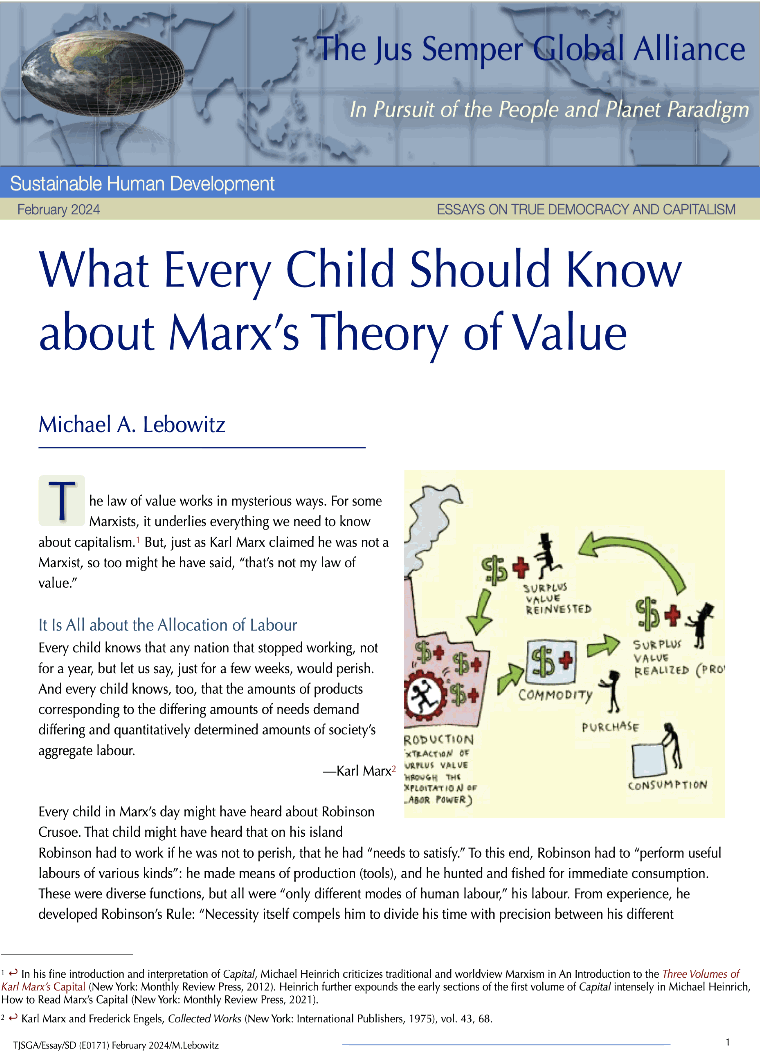It Is All about the Allocation of Labour Every child knows that any nation that stopped working, not for a year, but let us say, just for a few weeks, would perish. And every child knows, too, that the amounts of products corresponding to the differing amounts of needs demand differing and quantitatively determined amounts of society’s aggregate labour. —Karl Marx Every child in Marx’s day might have heard about Robinson Crusoe. That child might have heard that on his island Robinson had to work if he was not to perish, that he had “needs to satisfy.” To this end, Robinson had to “perform useful labours of various kinds”: he made means of production (tools), and he hunted and fished for immediate consumption. These were diverse functions, but all were “only different modes of human labour,” his labour. From experience, he developed Robinson’s Rule: “Necessity itself compels him to divide his time with precision between his different functions.” Thus, he learned that the amount of time spent on each activity depended upon its difficulty—that is, how much labour was necessary to achieve the desired effect. Given his needs, he learned how to allocate his labour in order to survive. As it was for Crusoe, so it is for society. Every society must allocate its aggregate labour in such a way as to obtain the amounts of products corresponding to the differing amounts of its needs. As Marx commented, “In so far as society wants to satisfy its needs, and have an article produced for this purpose, it has to pay for it.… It buys them with a certain quantity of the labour-time that it has at its disposal.” It must allocate “differing and quantitatively determined” amounts of labour to the production of goods and services for direct consumption and a similarly determined quantity of labour for the production and reproduction of means of production. For a full read of this essay, click here or on the picture to download the pdf file.
|

- © The Jus Semper Global Alliance
| Home |  | Resources |  | Economic Data |  | What Every Child Should Know About Marx's Thoery of Value |


